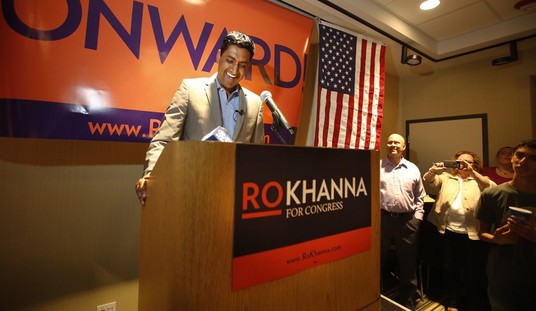For those who want to read the last-minute tea leaves, here are a couple of significant-but-indirect indicators of how tomorrow may go. First, Politico joins the Washington Post this week in predicting that not only will Democrats fail to win enough House seats to win control again, they may end up losing more seats to the GOP:
Nancy Pelosi has spent much of the past two years proclaiming that Democrats had a great shot at reclaiming the House and returning the speaker’s gavel to her hands.
But her drive to regain the majority for Democrats is on the verge of a complete collapse. Democrats are expected to pick up five seats at best — a fraction of the 25 they need. On the eve of the election, some party officials are privately worried that Democrats might even lose ground and drop one or two seats to the Republican majority.
It would mark an epic failure for a party that has a legitimate shot at keeping the presidency and the Senate on Tuesday. The inability of House Democrats to pick off a good number of seats from one of the most unpopular House majorities in modern history will cause a lot of soul-searching in the party come Wednesday.
I wrote about this in the Green Room on Friday. The GOP won the current majority with a big turnout at the voting booth, and a switch in support from independents. Each one of these seats has to be won again by Republicans in order for them to hold their majority. What does that tell us about the likely voter turnout tomorrow — and the direction they are going — if media analysts believe Republicans might actually increase their majority? It sounds as if the Congressional race voters will turn out and vote pretty much the way they did in 2010, not 2008, and that puts the electorate models of most pollsters far out of range.
Democrats have insisted that the pollsters have gotten it right, and that turnout will return to 2008 levels, despite numerous surveys showing Republican enthusiasm far outstripping that of Democrats in this cycle. If so, though, would their candidates distance themselves like this from their national party leaders?
They’ve played up their folksy demeanor, campaigned on local issues and gone to great lengths to proclaim they’re not President Barack Obama’s acolytes.
But red-state Democratic Senate candidates are still trying to survive the anti-Obama wave that started in 2010 and is threatening to wash away Democrats from the Great Plains to the Mountain West.
Of course, these are red-state Democrats … but you’re not seeing swing-state Democrats embracing Obama much these days, either. If the electorate in 2012 was going to resemble the 2008 model, you’d see incumbents like Bob Casey and Claire McCaskill rushing to embrace an incumbent President at the top of their ticket. Instead, they’re attempting to convince voters of their independence from the White House.
These are still indirect indicators, but the House majority numbers are particularly interesting. If Republicans hold their seats from 2010 and add to them, it’s because the turnout model will look roughly the same, as will voter enthusiasm — and that’s very bad news for Democrats, and not just Nancy Pelosi.







Join the conversation as a VIP Member